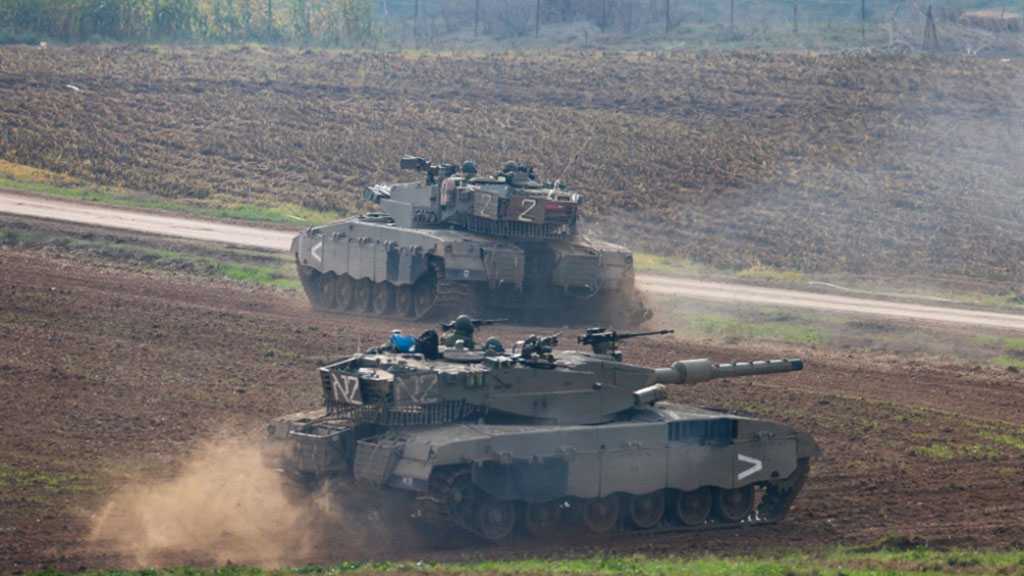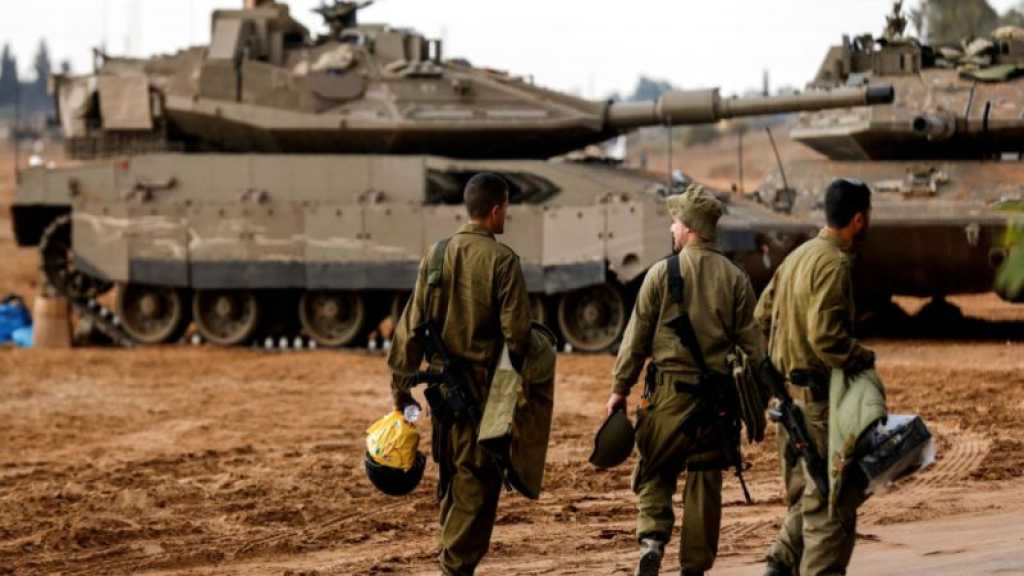First-hand Accounts from Gaza Battlefield: How We Surprised the Enemy and How We Were Surprised by Its Weakness

By Ibrahim Al-Amin | Al-Akhbar Newspaper
Translated by Al-Ahed News
In these situations, it’s always best to hear directly from the people on the battlefield. They offer all those who are asking questions large doses of morale sufficient to withstand the rigors of killing for long months and more.
News coming from the people in the field in Gaza - the castle – say that the enemy has the mentality of Western armies, which operate under the assumption that destruction and killing push their opponents to surrender or the population to revolt against them.
Therefore, it is trying to hide its intelligence failure by launching harsh strikes on civilians. When the “Israeli” public asks about the results of its operations, it answers with a stammer, as it realizes that the resistance has not been harmed by random or concentrated military operations. The people on the battlefield are confident that the direct losses sustained by the resistance, both in terms of personnel and equipment, do not exceed 10% of its strength.
The people on the battlefield have their clear accounts:
We know the enemy well, and we act on the basis that they know us well too. But the facts indicate otherwise. We simply weren’t paying attention to the deteriorating state of the enemy’s army, and then we understood its need for firepower and brutality against civilians.
It also became clear that the enemy knew far less about us than we expected. Even on October 7, we were expecting losses among our ranks many times greater than what we sustained, and we were expecting limited losses among their forces, and that the operation would end with a confrontation on our way back to Gaza.
But we did not take into account their loss of focus and cohesion, nor the state of chaos that prevailed in their military headquarters, which allowed us to kill more than 350 soldiers and capture a large number, including dead bodies or those who died on the way.
When the civilians from the Strip entered the settlements in the Gaza envelope, the resistance fighters had already accomplished the task of destroying the main positions of the Gaza Division, capturing those who needed to be captured, and taking the necessary equipment and belongings from the enemy barracks.
When the enemy woke up and decided to intervene, it implemented the Hannibal Directive and killed an overwhelming majority of the settlers with its own firepower, including those who were being transported to the Gaza Strip.
The first land infiltration operation carried out by the occupation forces was aimed at removing the bodies of soldiers or settlers. The “Israelis” were consumed by their losses until after examining the bodies to determine their identity. Then, they talked about reducing the number of their dead by about two hundred, after they discovered that there were bodies belonging to Palestinians.
The people of the battlefield add:
It was not long after the enemy woke up that it became clear that its intelligence apparatus was even more blind than it was on October 7. It did not provide any reliable information about the locations of the prisoners, the map of the tunnels, or even the locations of the leaders of the resistance forces.
When the enemy began using its firepower without control, it appeared that most of the targets did not reflect accurate intelligence. Quite a few of the martyrs of the resistance factions fell in civilian places and were martyred during indiscriminate bombing.
As for the operations in which the enemy succeeded in carrying out serious military strikes against the resistance, they were limited to important targets in the northern region and in areas where there is no point in giving details. During these operations, leading figures and several fighters fell. However, it was a strike that would not have disrupted the work programs.
On the contrary, the resistance quickly reorganized its affairs and resorted to implementing pre-approved plans that stipulated working according to a different hierarchy in times of war – there is permanent communication with the central command, but the brigades were given the freedom to decide the appropriate steps in defense and attack in the areas where they are geographically positioned.
According to the people on the battlefield in Gaza, the enemy focused at a certain stage on reaching the missile platforms. The “Israelis” arrested some of those who thought they could provide them with data about the locations of the missiles that were meant for storage or for being launched. However, the “Israelis” failed to reach any platform before they were launched.
At a later stage, the enemy succeeded in finding limited platforms and storage sites after penetrating certain areas. Perhaps the resistance should have launched them before their arrival, but the battlefield situation did not allow for this, which prompted the resistance to adopt subsequent plans that prevent the enemy from finding additional platforms.
Plans were activated that subject the bombing to a precise program, so that the resistance retains its ability to launch strikes throughout the war.
The people of the battlefield are carrying on:
The “Israeli” intelligence was monitoring us throughout the years prior to October 7, and it was leading the largest intelligence operation to determine the types and quantities of equipment. They had a perception that was supposedly sufficient to make them consider their steps in a different way.
But the problem for the enemy is that it never considered for a moment that we would not leave our positions, nor would we evacuate any point except based on a plan, and that we had experience that enabled us to obtain many things we needed in our battle. The experiences of our members and the experiences that we obtained from our allies in the resistance forces made it possible for us to act differently than what they thought.
By continuing to treat us as inferior and by denying our ability and competence, the enemy fell into a trap and is paying a high price through a series of continuous and nonstop operations.
The people of the battlefield confirm that many things of a military nature will become known to the public after the war, and the friend rather than the enemy will be shocked that the resistance fighters fought this enemy with tools, some of which were more advanced than they thought, and some of which were highly traditional.
The resistance knew from day one that its role in confronting ground operations was not to prevent progress, but rather to hinder it and even direct it to certain points, and that its primary role was to prepare the groundwork to receive the enemy’s tanks and soldiers while trying to position them at a certain point.
The people on the battlefield say that what tires the fighters most is the brutality that befalls their families in the Gaza Strip. They are following in detail what is happening on the ground, and many have inspected places that belong to them, but that hasn’t prompted any of them to rethink. Rather, the crimes may have caused them to become even more stringent and committed. What happened during the prisoner exchange and humanitarian truce was evidence of that.
It is true that the resistance wanted a truce to make people’s lives easier and relieve them, and the resistance may have benefited from any truce to arrange its operational affairs, but forcing the enemy to release detainees from its prisons was the central goal. This was to make the world understand that the enemy would not succeed in recovering its prisoners without paying the price.
On the last day of the truce, there was a possibility of doing certain things, but the enemy was in a hurry to return to war. Therefore, there was no point in continuing to grant them prisoners at a time when they would be under pressure from the prisoners’ families later, and they were planning their new battlefield steps. Hence, it became clear to us that the equation has changed.
When mediators and even friends tried to put pressure or deceive us, to maintain the truce to free enemy prisoners in exchange for low prices and to open the way for a political dialogue aimed at extracting political concessions from us, we decided at the appropriate moment to stop this series.
Everyone, without exception, from comrades, allies, mediators, and friends to our enemies, was informed that the final decision rests with the people on the battlefield and that they have become decisive. In accordance with a new strategy, the cost of returning to discussions about the prisoner file begins with a final and comprehensive cessation of the war.
The exchange deal cannot be carried out according to the enemy’s conditions. The world must convince “Israel” to release all the detainees, and that all the talk about the day after can only be undertaken independently and by those concerned with the people of the land after they return to inspect their homes and figure out a way to rebuild what the enemy destroyed.
Tomorrow: We have nothing left to lose.
Comments




